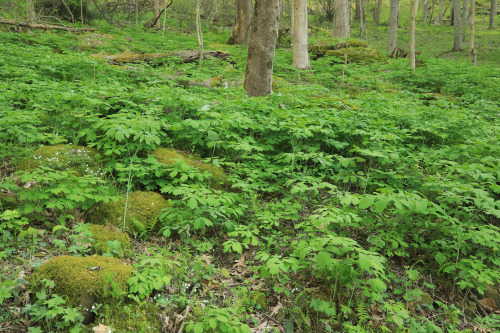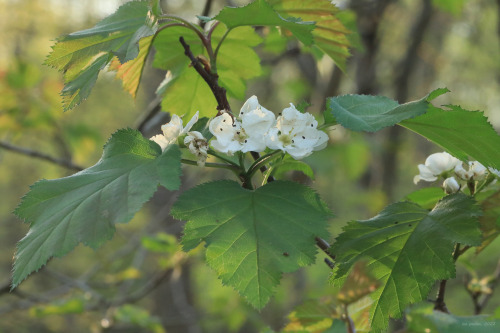#caulophyllum giganteum
Elizabeth’s Woods, part of the Toms Run Preserve system, is located just a few minutes from where I work: a convenient little Eden on whose gentle, winding trails I frequently relieve my accumulated angst and stress. In early spring, especially in the late afternoon, the old woods take on a soft, burnished glow that penetrates every leaf and flower, exposing nature’s finest filigree - veins, venules, stigmas, anthers and more - in intricate detail.
From top: a rocky alcove overrun by giant blue cohosh (Caulophyllum giganteum); a purple variation of dwarf larkspur (Delphinium tricorne), a toxic little beauty whose flowers remind me of parachuting wizards; an even lovelier lavender and white variation of the same plant; a tall and stately Jack-in-the pulpit (Arisaema triphyllum); a smooth blackhaw viburnum (Viburnum prunifolium), equally beautiful in spring and fall, when its foliage turns reddish-purple; bigfruit hawthorn (Crataegus macrosperma) with new spring blossoms; woodland stonecrop (Sedum ternatum), whose massed white flowers look like clumps of snow in the leaf litter; and an unfurling Virginia grape fern (Botrypus virginianus), also known as rattlesnake fern due to its tendency to grow in the same habitats in which rattlesnakes occur.
Post link










